Behringer Spring Reverberation 636: Vintage Springs in Eurorack space
A Eurorack compatible vintage-style spring reverb unit
Behringer takes on the classic Grampian analogue reverb in the Spring Reverberation 636, but is the size and shape too huge for Eurorack?
Spring Reverberation 636
Back in the day, reverbs took up quite a bit of space. The very fact that you have to shake a physical spring to generate the reverberation meant that these units were big. Digital technology, of course, sorted that all out and made reverb and other effects far more compact and convenient.
But something like the Spring Reverberation 636 is not meant to be convenient. It’s meant to impose itself onto your desk and demand to be used.
So, what do we have? Well, the original 636 contained a nice big reverb tank consisting of a pair of suspended springs connected to electromagnetic transducers to simulate the effect of a live hall. It had a reverb time of more than 2 seconds. There were two independent inputs: one for low-impedance sources such as microphones, the other for higher-impedance signals such as guitar and preamps.
The microphone preamp consists of a DC feedback pair with the input transistor biased for low-noise operation. It’s supposed to be driven hard in order to get the best out of the mechanicals and the signal-to-noise ratio. There’s an overload indicator light to let you know when you are hitting those limits.
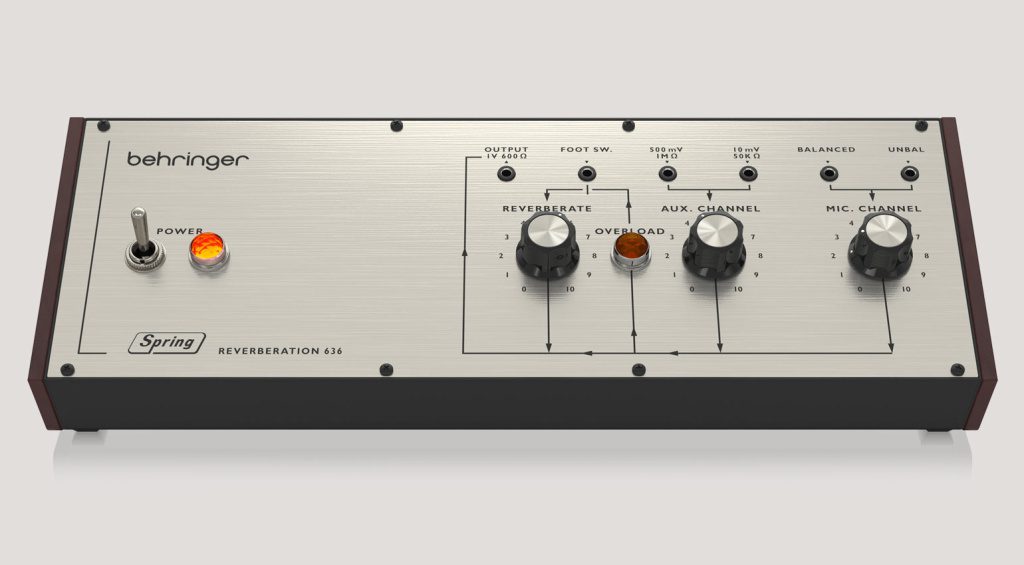
Behringer says they’ve replicated it perfectly and so we can assume it has all the same sort of stuff going on. On the front panel, you get gain controls for the mic and aux channel, plus a mix control over the reverb. The preamp has become renowned for its saturation and that alone makes this a useful box.
Eurorack friendly
Behringer has added a bunch of Eurorack connections along the top of the front panel for easy patching. That’s certainly useful, but in Eurorack terms, the Behringer 636 is ridiculously wide.
There are plenty of spring reverb modules available for Eurorack, and all of them place the reverb tank outside the rack to save space. I don’t think many people are going to be dropping this thing into their modular case.
However, the presence of the connections does make it easier to plug-in from your modular, but I don’t think Behringer needed to build it into a Eurorack format case. All the same connections can be found on the back of the unit as 1/4″ jacks, so you can use it as a desktop effects unit.

Springs and space
Judging from the demo video, the 636 sounds rather fabulous. It is instantly recognisable and full of character. You start to think about reverb differently simply because it’s sitting there front and centre.
It looks a little bit strange from our modern perspective of digital effects and miniaturisation. But it really does feed into the analogue aesthetic that we all seem to love without question.
Pricing and availability:
The 636 is now available for order from Thomann.
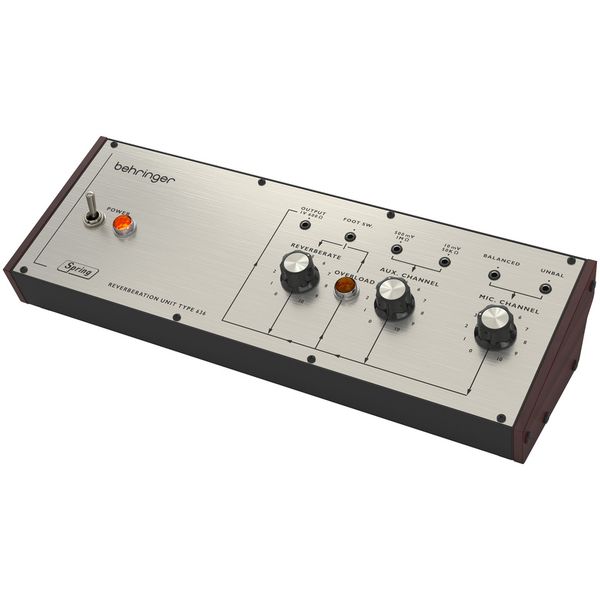
*Note: This article contains promotional links that help us fund our site. Don’t worry: the price for you always stays the same! If you buy something through these links, we will receive a small commission. Thank you for your support!
5 responses to “Behringer Spring Reverberation 636: Vintage Springs in Eurorack space”

You are currently viewing a placeholder content from Facebook. To access the actual content, click the button below. Please note that doing so will share data with third-party providers.
More InformationYou are currently viewing a placeholder content from Instagram. To access the actual content, click the button below. Please note that doing so will share data with third-party providers.
More InformationYou are currently viewing a placeholder content from X. To access the actual content, click the button below. Please note that doing so will share data with third-party providers.
More Information
 4,7 / 5,0 |
4,7 / 5,0 | 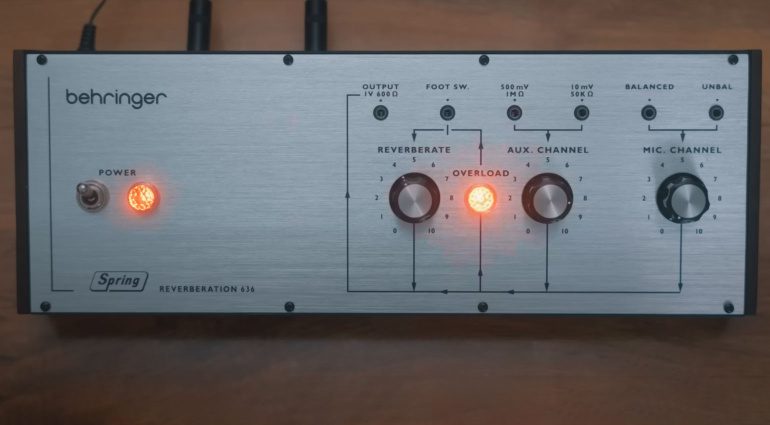

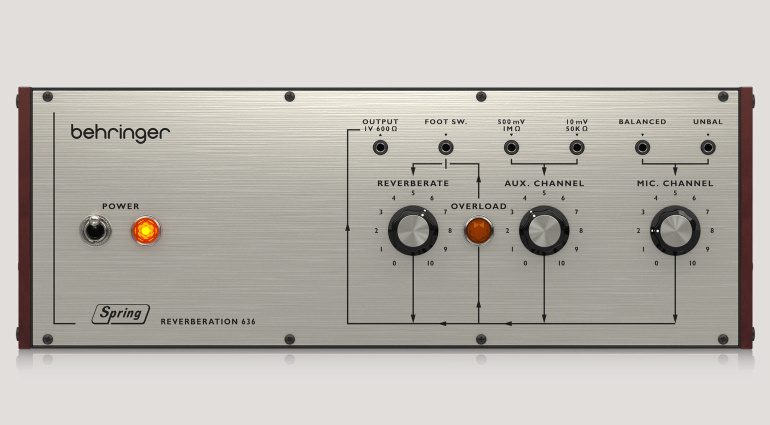
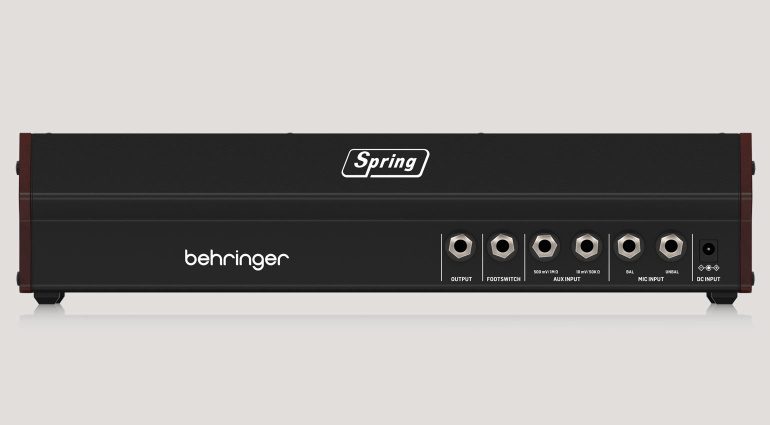





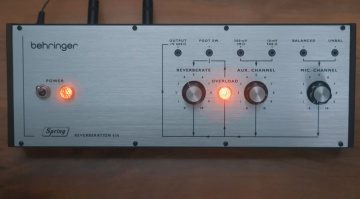




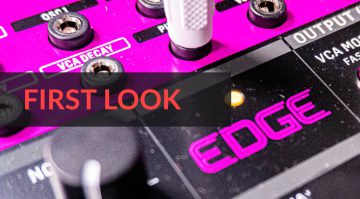
Despite being ‘eurorack compatible’ it is clearly a desktop unit.. any feigned concern about Horizontal Pitch is just clickbait.
it’s still way too big for what it is. It could have been a pedal. Behringer products in general in the semi-modular/modular space have no concern for space conservation. I stay away from them for this reason among other things.
Depending on the size of the reverb tank it would be an exceedingly large pedal 🤣
do you realise there is a spring inside? 😜 Based in the sound it’s a good deal larger than the accusonic tanks used in the (excellent) doepfer module – that would still be hard pressed to fit inside a standard pedal.
The modular comments are irrelevant- a CV input or two are a little bonus but fairly insignificant
What spring tank module would fit into a pedal? I’m genuinely interested as I’ve been looking into building a smaller reverb tank, I would love a link if possible.
none